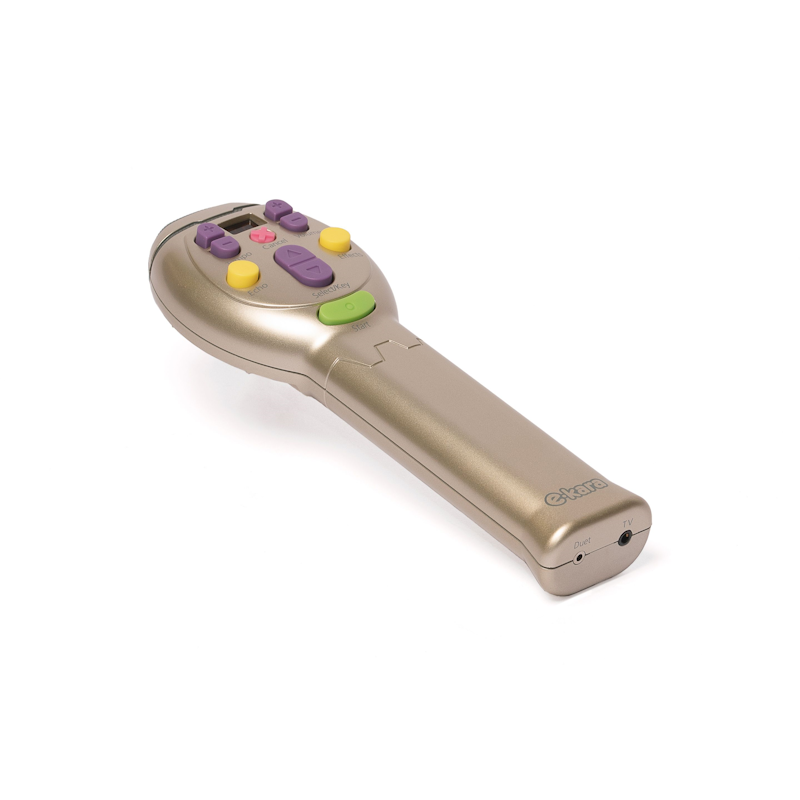|
History
Takara was a toy company founded in 1953. Operating out of Tokyo, Takara first started with traditional toys and board game. Their first major commercial success was the Licca Kayama doll (also called Licca-Chan). Released in 1967, the doll have sold more than 60 millions units to date. This was only the first major success for Takara which continue releasing genre-defining toys suchs as a series of miniature car called Choro Q in the 70s, the B-Daman and the Beyblade in the 90s, etc.
In the 90s, the Karaoke was an extremely popular activities in Japan and a lot of company were looking the home market. But home karaoke system were expensive and complex. You needed a screen for the lyrics, good quality audio system, specially encoded song, etc. Music distribution was probably the biggest problem. In a age where the Internet was not as fast and popular than today, you had to rely on specialized compilation that were expensive, or uses a a machine that could connect to an online catalogue. In 1994, Sega released the Sega Music Network to be used with their commercial Karaoke system, the Prologue-21. In 1995, Taito offered a similar service for their home Karaoke system called the X-55. All these services were aimed at adult, leaving the door wide open for Takara to provide an offering to a younger audience.
Takara understood that to enter this market segment they had to have a product that would be affordable and easy to use. Takara licensed the Xavix technology from SSD (which would later release the XaviXPORT using the same technologies) and released their take on the home Karaoke system with the e-Kara. But while releasing an home Karaoke system for the whole family was the primary goal, Takara couldn’t dismissed another opportunity brought forward by the e-Kara : the rythm games. Since the late 80s, Japan had been dancing to the rhythm of the Dance Dance Revolution series. The latest in the series of rythm games was GuitarFreaks who had just been released. Since the e-Kara would used cartridges to hold the songs, it was not difficult to create a system to make use of these cartridges as a base for a rhythm game. Instead of using the falling down notes from the music, the Popira (ポピラ) represented the notes by four falling ball that needed to be bounced with the rhythm of the music. While a bit more preparation were needed to make a cartridges compatible with the Popira system and therefore not all e-Kara cartridges would be compatible with the Popira system, the inverse was not an issue. To differentiate the two series, the Popira compatible cartridges would be called the Gold Cartridge and would start with a “G-“.
Release
Released on October 20, 2000, the e-Kara was an instant success. A few days later, it was TOMY’s turn to release their own Karaoke machine called Kiss-Site, which never became close to be a worthy competitor to the e-Kara. In 18 months, the e-Kara had sold over a millions units and over 2.5 million cartridges. The Popira which released on the same day had a bit less success with only 200,000 units sold over the same period of time. Nevertheless, those number were good enough for Takara to repeat the experience. On July 21, 2002 Takara released the e-Kara N, an improved version of the e-Kara, and Popira 2, a second instalment of the Popira franchise that now feature a second controller for some head to head competition and multiple different game play options. While the Popira 2 did fairly well, Takara couldn’t help to notice that another rhythm game was taking Japan over : Taiko no Tatsujin. The game which simulates a taiko drum was very popular in both the arcade and in the home console. Takara swiftly decided to build a third installment in the Popira series with Taiko de Popira. The Taiko de Popira didn’t do as well as expected, but at this point Takara understood that as long as they kept releasing updated hardwares that are compatible with their e-Kara brand, they could do no wrong. As such, Takara decided to revisit the concept of the dancing mat by launching the fourth installment in the Popira franchise: Jumpin’ Popira which was an undated version of the Dance Dance Revolution Fami Mat, a console using the e-Kara cartridges released under the Konami brand.
Demise
The e-Kara franchise held strong for a number of years, releasing a ton of different variation of the console, including some proper video game console such as the e-Pitch.

